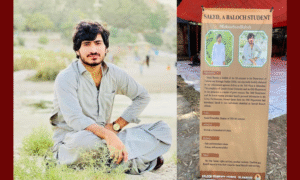Von Willebrand disease is a common inherited bleeding disorder caused by a quantitative deficiency or qualitative defect of Von Willebrand factor. It is the commonest inherited bleeding disorder,yet it remains underdiagnosed or misdiagnosed in Pakistan.The disease was first described by Dr Erik Von Willebrand in 1926 in the Aland Archipelago. VWF is synthesized by the endothelial cells and megakaryocytes and is stored in Weibelpalade bodies and alpha granules.In response to numerous stimuli,VWF is released from storage granules in platelets and endothelial cells. The two main functions of VWF being mediation of adhesion of platelets to sites of vascular injury and binding and stabilisation of the procoagulant protein factor VIII.Thus any defect or deficiency of VWF leads to defective platelet plug formation and fibrin formation.VWF circulates in blood plasma at a concentration of 10mg/mL.
Clinical Subtypes
Von Willebrand disease has been classified into three different types:type 1 and 3 refers to a partial and complete deficiency of VWF respectively, while type 2 includes the qualitative abnormalities of VWF structure and / or function. Type 2 VWD is further subdivided into subtype A, B, M and N.
Clinical Presentation
The most common clinical presentation of VWD is epistaxis and menorrhagia.Patients also present with gum bleeding,easy bruising and prolong bleeding after surgery.Type-3 VWD patients or severely affected patients present with haemarthroses like haemophilia and cephalhaematomas.Patients may present at any age because of wide range in severity of symptoms and some people may have no apparent bleeding history.
Statistics Worldwide
According to western literature,VWD accounts for 0.7 to 1.6% in their population, type 1 being the commonest (70-80%).
This statistic shows the distribution of patients in the U.S. with von Willebrand disease (VWD) as of 2021, by ethnicity. As of that time, around 84% of patients with type 1 von Willebrand disease were white, compared to just 7 percent who were black or African American.

www.statista.com
Statistics in Pakistan
Although studies on VWD are limited in Pakistan, reports claim a prevalence of 3.18-7.74% among people with hereditary bleeding disorders.The lack of enough studies and hence evidence of the prevalence of VWD makes it an underdiagnosed illness in Pakistan.
According to a study conducted in a local hospital in Punjab in which five hundred and ten patients registered with Pakistan Haemophilia Patients Welfare Society were included, 86.27% presented with positive family history of bleeding disorder and 13.73% showed no family history of bleeding disorder. Type-3 was observed in 94.12%, Type-2 in 3.92% and Type-1 in 1.96%.

Easy bruising was the most common presenting feature accounting for 41.18%. Followed by epistaxis 13.73%.Gum bleed 7.84%, menorrhagia 9.80% among adult females, haemarthroses 3.92%, Umbilical cord bleeding 5.88%, bleeding after circumcision 3.92%,bleeding after surgery 3.92% and haematoma in 9.80%.
The results of this study were similar to studies conducted in northern Pakistan and Karachi, reporting Type-3 to be the commonest type.
Treatment
Patients of VWD need lifelong treatment and treatment plan is made by typing of the disease because each type has separate treatment option.The need to confirm or exclude VWD as the cause of bleeding disorder involves a strong clinical suspicion, comprehensive clinical evaluation, with a judicious use and interpretation of various screening tests. These can be followed by more specific diagnostic tests which could include repeated laboratory testing.
References
⦁ Muhammad Kaleem Khan, Sunia Qasuria Khan, Naumaan Aslam Malik.SPECTRUM OF VON WILLEBRAND’S DISEASE IN PUNJAB: CLINICAL FEATURES AND TYPES
⦁ Salman N. Adil,M. Adnan Qureshi. VON WILLEBRAND DISEASE- An underdiagnosed entity.
⦁ www.statista.com
The Students’ Herald News Desk focuses on reporting the latest news regarding student politics and campus updates to you.
The News Desk can be reached at admin@thestudentsherald.com



